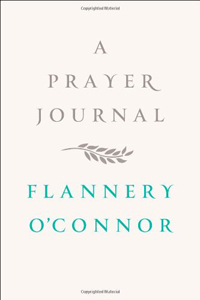Book Notes
 Flannery O'Connor, A Prayer Journal (New York: Farrar, Straus, and Giroux, 2013), 96pp.
Flannery O'Connor, A Prayer Journal (New York: Farrar, Straus, and Giroux, 2013), 96pp.
When Flannery O'Connor died from lupus at the age of thirty-nine, she had published a modest amount of work — two novels, thirty-one short stories, and some essays and reviews. That was more than enough to establish her reputation as one of America's greatest fiction writers. There have been two hundred doctoral dissertations and seventy book length studies of her work, and a recent critical biography by Brad Gooch (2009).
O'Connor was also decidedly Christian. She attended daily mass most of her adult life, and described herself as "a thirteenth century Christian" and "hermit novelist." She read broadly and deeply in Aquinas and other theologians. For her, the craft of her art — good stories well told — was an end in itself and a sign of God's grace. The content of her fiction was her confession of faith: "My subject in fiction is the action of grace in territory largely held by the devil." To those who complained about her grotesque and deeply flawed characters, she insisted that "there is nothing harder or less sentimental than Christian realism."
When O'Connor was twenty years old, she left her home in the deep south to study at the Iowa Writers' Workshop. While there, she kept a prayer journal from January 1946 until September 1947. The journal demonstrates how early and how strongly she sensed God's call to a writerly vocation. She prays to be a good writer, and is self-conscious about her talent. Anything good that she writes, she says, comes directly from God as his gift. She confesses her ambition. She worries about mediocrity, as a believer and as a writer, and gets discouraged on both fronts. She frets about atheist hostility to her faith. And so she "staggers between Despair and Presumption."
O'Connor's friend and colleague W.A. Sessions of Georgia State University provides a short introduction. The journal itself is short (pp. 3–40), and is followed by a facsimile of the original Sterling Notebook in O'Connor's own handwriting (pp. 43–96). These prayers of consecration and commitment found their fulfillment — while writing this prayer journal, O'Connor was also working on her first novel, Wise Blood (1952).


